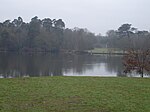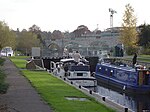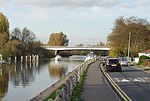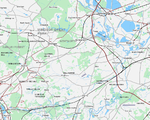Chertsey Meads
Local Nature Reserves in Surrey

Chertsey Meads is a 41-hectare (100-acre) Local Nature Reserve east of Chertsey in Surrey. It is owned and managed by Runnymede Borough Council.This is an area of floodplain meadow on the bank of the River Thames. Over 400 plant species have been recorded and 108 bird species, including lesser whitethroat, reed bunting, reed warbler and sedge warbler.There is access from Mead Lane. Henry VIII came to Oatlands on a progress and hunted stags on Chertsey Meads in 1514. The stage were held in pens and released one by one. Sir Philip Draycot described the hunt with greyhounds and horsemen with spears, as "the most princely sport that hath been seen".
Excerpt from the Wikipedia article Chertsey Meads (License: CC BY-SA 3.0, Authors, Images).Chertsey Meads
Mead Lane, Borough of Runnymede
Geographical coordinates (GPS) Address Nearby Places Show on map
Geographical coordinates (GPS)
| Latitude | Longitude |
|---|---|
| N 51.385 ° | E -0.477 ° |
Address
Mead Lane
Mead Lane
KT16 8LS Borough of Runnymede
England, United Kingdom
Open on Google Maps









